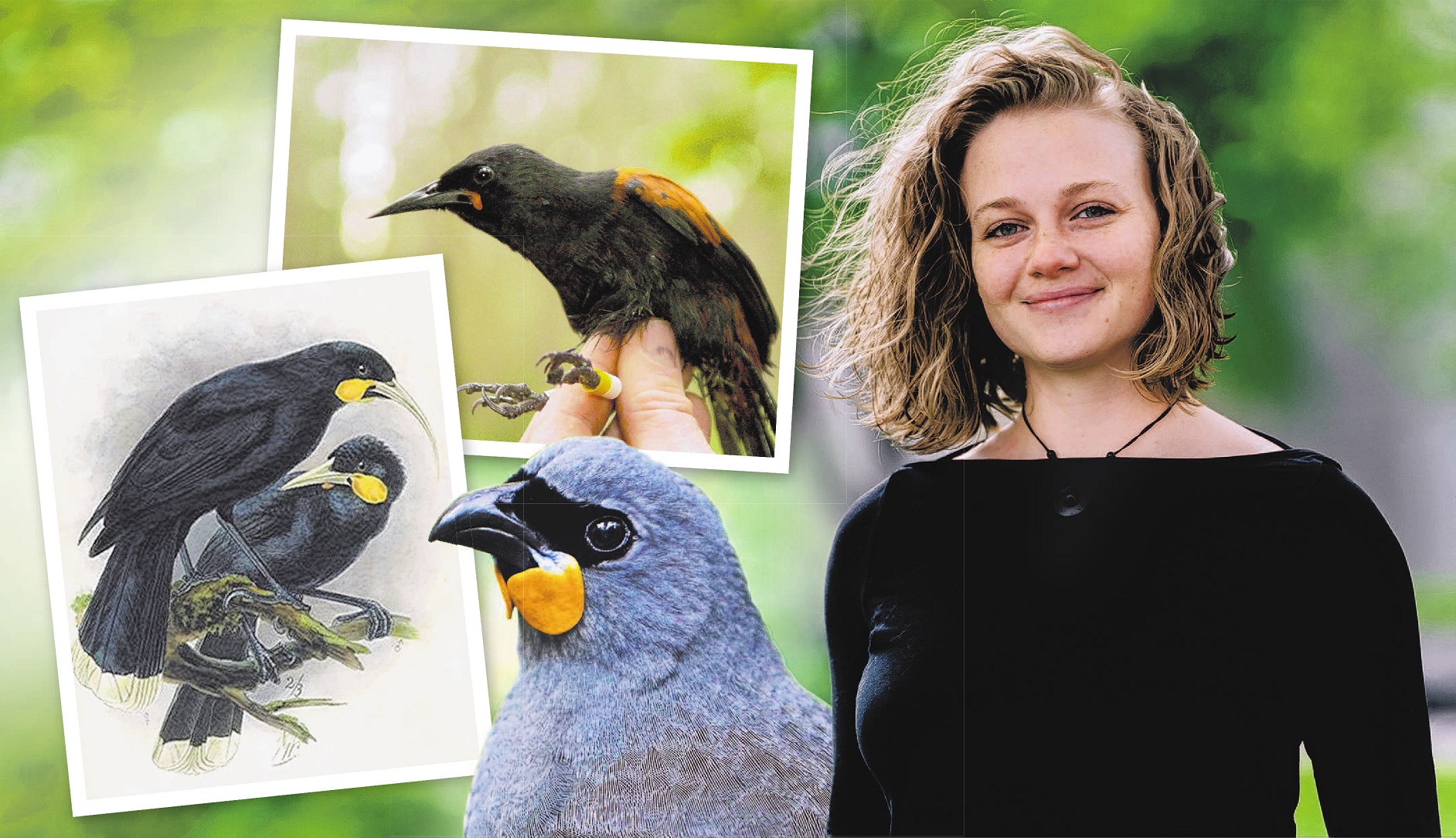
University of Otago researchers explored the origins of the wattlebirds by analysing their DNA and found the birds’ ancestors arrived in New Zealand about 20 million years ago.
Lead author and anatomy PhD candidate Pascale Lubbe said scientists knew the wattlebirds were an old New Zealand family, but did not know much about when kokako, huia and tieke evolved.
"Their evolutionary histories have, until now, been shrouded in mystery," she said.
The researchers believed several marine straits which separated the North and
South Islands, such as the Manawatu Strait which covered modern day Palmerston North, resulted in the North Island forms of kokako and tieke splitting from their South Island relatives about 2.5 million to three million years ago.
"Divergences between the North and South Islands are present in many plants and animals in Aotearoa, and we are still trying to understand the influence of new (Cook Strait) versus old (Manawatu Strait) marine seaways in these changes.
"We do not yet know if the tupuna [ancestors] of kokako and tieke were present on both main islands and became separated by marine straits, or if they occurred on one island and flew across the straits to the other.
"Future fossil discoveries may hold the key to distinguishing between these competing hypotheses."
Huia split away from tieke saddlebacks about 8 million years ago, although it was difficult to speculate on what the driving force of the speciation was, she said.
"It’s possible there may have been huia on the South Island, which then went locally extinct.
"Fossilised bird bones from the 16 million to 19 million year-old St Bathans deposits could help answer questions raised by this research — if wattlebirds originated in the North Island and kokako and tieke saddlebacks flew south, or if they were present on both islands and got separated by marine straits."
The study highlighted the importance of the interconnectivity of molecular, geological, and fossil evidence in unravelling the complicated biological heritage of our winged animals, she said.
"Fossils are incredibly important sources of information about the country’s biological heritage and the whakapapa of our taonga species."











